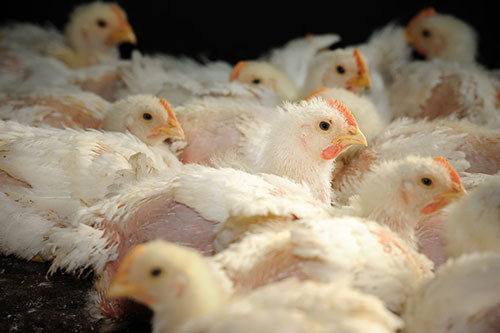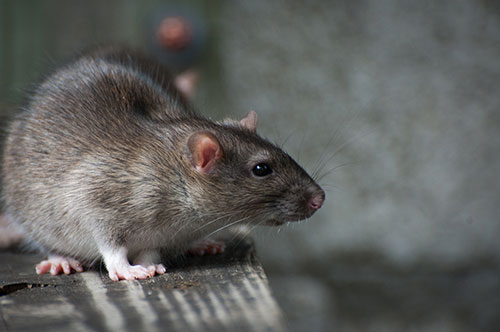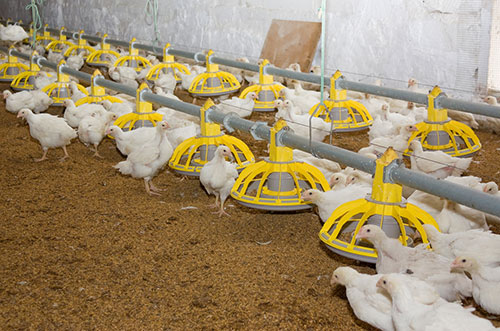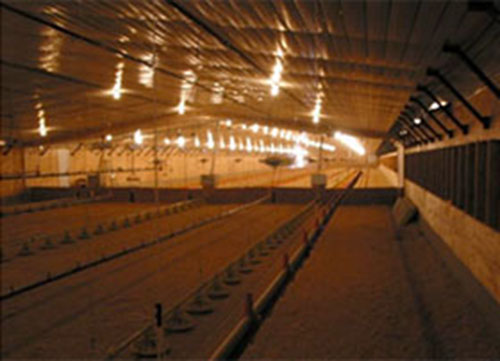



Spiking Mortality Syndrome in Broilers, Part 3
Although spiking mortality of broiler chickens is no longer a hot topic in the industry, it still is somewhat of a recurrent problem in several parts of the world. In Part 3 of this series, Angel I. Salazar focuses on sanitation, pest control, litter management and feed issues in preventing this malady. Spiking Mortality is referred to as a syndrome because there is no single, indisputable, consistent cause and effect relationship clearly and completely defining this malady in all its aspects.
Spiking Mortality is referred to as a syndrome because there is no single, indisputable, consistent cause and effect relationship clearly and completely defining this malady in all its aspects.
General, Common Sense, Preventative Measures
1. Increasing farm downtime in between successive broiler flocks to a minimum of 12 – 14 days is of practical value.
2. Good and through cleaning and sanitation of the initial, partial brood area is a must.
3. Complete removal of all portions/areas of caked litter from previous flock. Top dressing this section of the house with a couple of inches of fresh, dry litter material is also of great practical value.
4. Pay due consideration to old feather removal and burning. This is another key component in reducing the incidence of spiking mortality. The air exhaust end of tunnel houses where the fans are located is a critical control point in this endeavour.
Many a times, after house wash down, one frequently is able to detect large, thick patches of old feathers from previous flock(s) the clean-up crew has overlooked and left behind untouched.
 Rodent and Pest Control
Rodent and Pest Control
Since arena viruses are also known to infect beetles, mice, rats, and other birds such as pigeons, a concerted effort is needed to keep all these pests away from our broilers or at least under control. Thus, we need to practice a strict and disciplined rodent control program.
The dark, long hall, compartment at the cool pad or air intake of our broiler houses must be thoroughly cleaned and be completely free of all rubbish that tends to accumulate in this particular area over time. The floor of this area should be top dressed with pebbles or filled with concrete to prevent rats from digging burrows and gain easy access to this area.
Put in place an intense and smart baiting of premises with anticoagulant blocks/pellets during down time, in between successive broiler flocks. This practice cannot possibly be over emphasised.
Also, when a neighbouring broiler farm/complex is being depopulated is high time to get our baiting programme in high gear. Rat colonies are able to migrate several kilometres in search of food and shelter. They can easily invade our broiler farm where feed and shelter are plenty available.
Most likely, both mice and rats are very important culprits for recycling or for the reoccurrence of spiking mortality in troublesome, re-incident farms and or houses.
 Intensive Usage of Recycled Litter Material
Intensive Usage of Recycled Litter Material
Intensive use of recycled litter with heavy infestations of darkling beetles is also a critical control point to keep in mind. Heaping and fermenting of reused litter is a key factor in reducing beetle populations. Reduce your dependence on insecticide application.
Do not allow old, piled up litter or depots of old litter material to accumulate on the same land plot your broiler houses are located. Effectively dispose of old litter properly and far away from your farm premises.
Limiting recycled litter usage to 5 – 6 consecutive flocks should also be considered. Coincidentally, I happen to know several, medium size broiler integrations in Central America which have never used recycled litter.
As far as I know, these operations are yet to experience a single outbreak of spiking mortality. Could this be coincidence alone?
 Lighting Programs, Miscellaneous Husbandry Practices, Types of Feeding Equipment
Lighting Programs, Miscellaneous Husbandry Practices, Types of Feeding Equipment
Dr John Schleifer (Hoechst Roussel Vet, Gillsville, GA) commented in an article, one management technique that has offered the best help in reducing the incidence of spiking mortality syndrome is administering a correct lighting programme, one which restricts the number of hours of light young broilers are exposed to on a daily basis.
The thinking behind such lighting programmes is to increase the number of uninterrupted hours of total darkness the birds are exposed to as they grow and mature.
The apparent goal of the above strategy is to increase the level of melatonin. This is a natural hormone released from certain areas of the brain. Higher levels of melatonin may help to elevate the level of growth hormone and reduce the incidence of hypoglycemic birds.
It appears these adjustments of lighting programs have been successful both experimentally and also in a practical setting. However, like everything else tried, no single lighting program has proven to be a cure-all. Sporadic outbreaks of SMSC still occur regardless of management practices implemented.
During the first two to three weeks of rearing, consider exposing young broiler birds to short periods of natural light, by lowering side curtains of a tunnel house several times a week, which allows for the birds to become lively, more active.
The most frequent reaction one observes is chicks/birds immediately go to the nipple drinkers and for the pan feeders as well. If anything, it breaks the monotony inside the broiler house.
Let’s remember early drinking and feeding are both learned behaviours, natural day light allows for increased house light intensity at no cost. In short, allow for good light intensity during the first 15 – 18 days of rearing.
Mini troughs or “turbo feeders” are becoming more popular and are now widely used in the broiler industry as the choice of supplemental feeders for the first couple of weeks of rearing. This type of feeders are less labour intensive and, if properly managed, keep broiler feed fresher and a whole lot cleaner than traditional chick lids or trays.
If you are limited to utilising chick trays only, supply small to medium sized amounts of fresh feed as often as possible throughout the day. If one detects large, thick patches of caked, mouldy feed and manure on the bottom of chick trays upon removing them from the house, after the first 8 to 10 days of rearing, it is a clear indication the caretakers administered large amounts of feed on the trays once or twice a day.
Conclusion
The reality is frequently a flock of broilers affected with spiking mortality responds well to one kind of treatment but then another flock fails to respond at all to the exact same strategy.
This, no doubt, puts a damper on our efforts to come up with a consistently efficacious way to minimise the incidence of spiking mortality in the field. Nonetheless, much progress has been made since the malady first appeared in the late eighties.
Read More
Spiking Mortality Syndrome in Broilers, Part 1
Spiking Mortality Syndrome in Broilers, Part 2
July 2015








